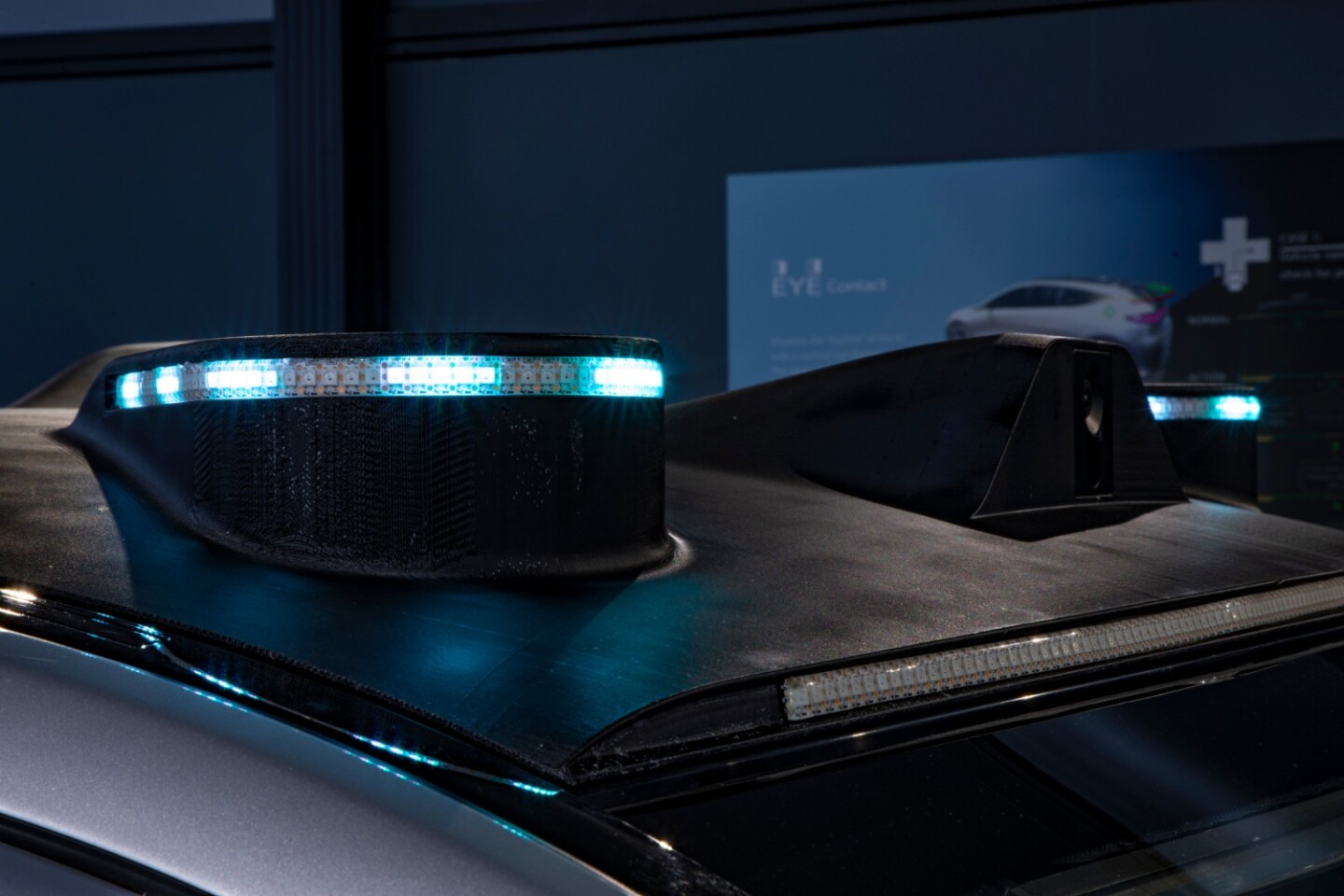It was just last month that we heard about an experimental lighting system developed by Jaguar, that lets leery pedestrians know what autonomous cars are about to do. Well, Mercedes-Benz is working on something similar, in the form of its driver-optional "cooperative car."
The vehicle is actually a modified S-Class sedan, featuring a 360-degree turquoise LED light-signalling system on its roof. The lights remain steadily illuminated while the car is underway in autonomous mode, flashing slowly when it's about to stop, and flashing rapidly as it begins to accelerate.
Some of the roof lights are only visible to pedestrians or cyclists who are directly in the car's path – these illuminate to let those people know that they've been "seen" by the vehicle's sensors, not unlike the manner in which drivers make eye contact with other road users.

There are also strips of the turquoise LEDs in the windscreen, radiator grille, headlights, side mirrors, and the lower part of the windows. These likewise indicate that the car is operating autonomously, lighting up as the vehicle is about to pull away from the curb.
Additionally, as the Mercedes is about to get going, its front end lifts up followed by the rear, and its side mirrors fold out. According to the company, pedestrians should understand this type of communication intuitively, as "these movements resemble a living being that is waking up and stretching."

After studying how people reacted to the system, Mercedes-Benz is now contributing its findings to SAE International, an international engineering association that is establishing standards for autonomous vehicles.
Some of the automaker's similar previous projects have included the F 015 self-driving concept car, that displays electronic messages on its grille, and the autonomous Vision Urbanetic van, which acknowledges pedestrians by digitally reproducing their outlines on its exterior.
Source: Daimler








